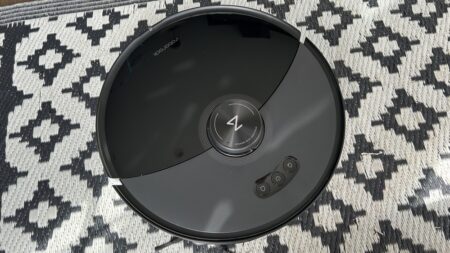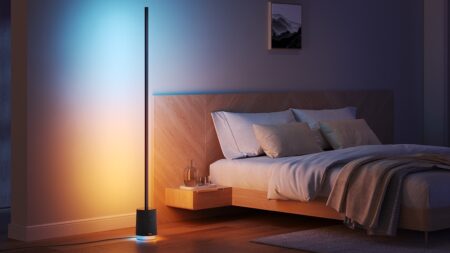Matter 1.0 includes the ability to cast video to Matter enabled TVs
A lot of the attention surrounding the Matter launch has focused on smart home devices such as sensors, locks and lights, but there’s a major feature going live with Matter 1.0 that has slipped under the radar somewhat.
Matter Casting, which is available to TV brands building with Matter, has big plans to shake up the fragmented device to screen video streaming category.
Matter not only allows for the control of smart TVs that boast Matter but the new smart home standard also offers devs, streaming platforms and TV manufacturers the opportunity to offer users a new, and hopefully simpler, way of beaming video action from a device such as smart phone, tablet or even smart speaker to a TV.
“Video streaming devices and TVs; that’s in Matter 1.0,” Chris DeCenzo, Amazon’s Senior Principal Engineer told The Ambient at a briefing at the Matter launch event in Amsterdam this week
“That’s an area that we are especially sensitive to because Alexa is a really popular use case for controlling TVs and video player devices.”
DeCenzo stated his belief that the current device-to-TV experience leaves a lot to be desired and that Matter could offer users an alternative route with less barriers.
“Launching content on TVs is a really broken experience today; there’s four or five different competing proprietary protocols,” DeCenzo explained.
“If you go into a hotel room and you want to get what’s playing on your phone going out of the TV, or even in your own house, it’s sort of hit or miss whether it’s actually going to work. And that’s frustrating and I think it’s a big opportunity loss, especially when you look at how much all of our companies have invested in media. The possibilities with video are really pretty incredible.”
DeCezno explained that it will take the likes of Netflix, Hulu, Disney+ and the BBC to buy into the Matter philosophy and for their developers to make use of the tools on offer, but Matter will also have a secondary option for if that isn’t always the case.
“We did a lot of work within Matter, collaborating with TV companies to create this standard based on the stuff that we do with Alexa for controlling TVs,” he said.
“There’s sort of two different models for casting video. One is where you’re communicating with an app running on the TV. And the other one is where you’re basically sending bits to the TV.
“You could look at AirPlay as at the bits and you could look at communicating with an app as more like the Google Cast model. In Matter Casting, you have both.
“When you when you connect to the TV from the phone app, for example, you get access to an app on the TV if it’s made by the same company. They can then launch content within their app, which is the preferred model for content companies as they spent all this money on the app and they want like the full experience for the customer in their app.
“But Matter also has a URL base casting option, which is kind of like a fallback. If you try to if you connect to the TV, and that doesn’t have your app on it you can always go back and do the URL based streaming.
“So supporting both is sort of like the perfect balance.”
Over at the Amsterdam launch event TCL was the only brand showing off a Matter enabled TV but we expect the likes of LG and Samsung to add Matter to the mix in the near future, as both Korean companies are part of the Connectivity Standards Alliance – the guys powering the Matter project.





